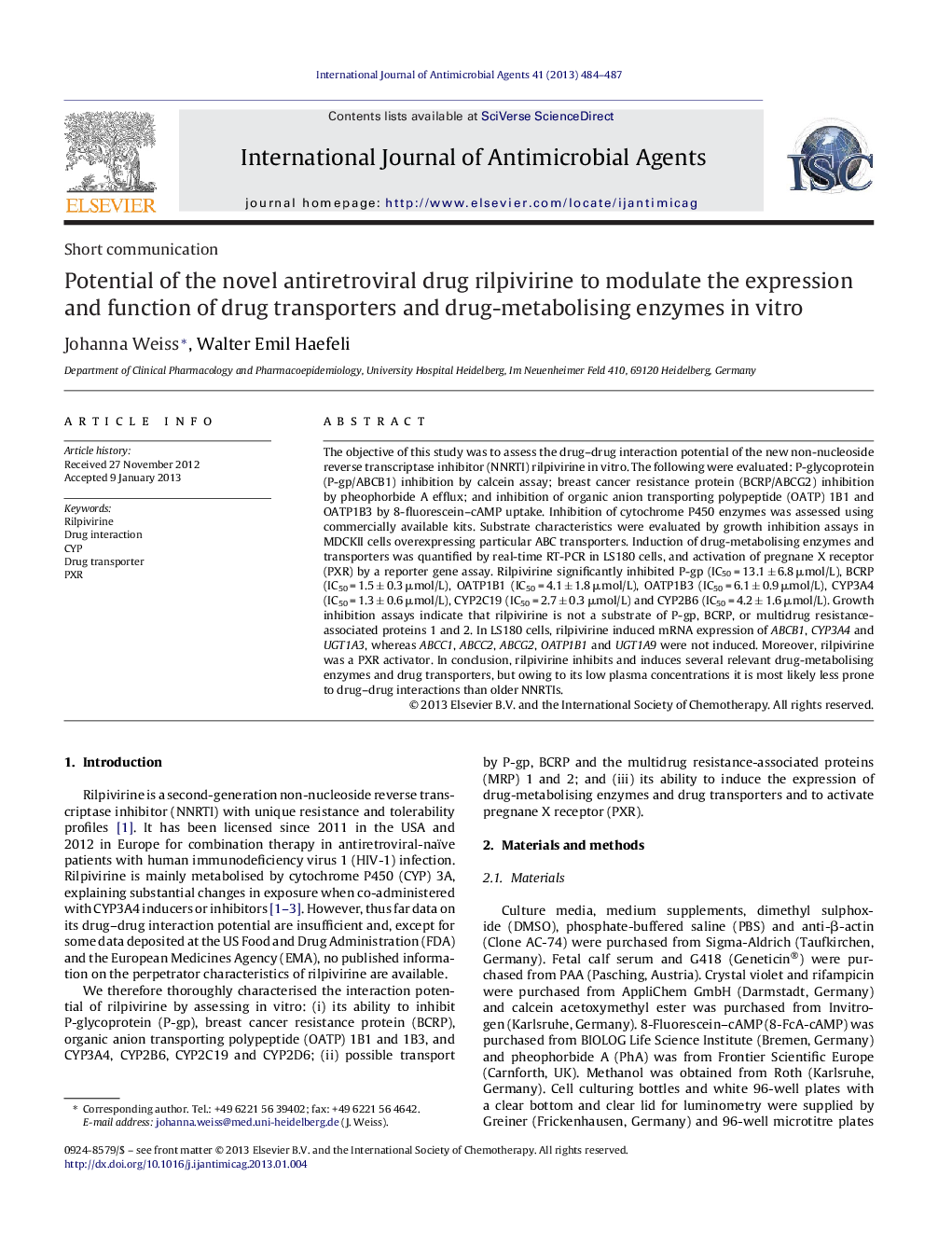| Article ID | Journal | Published Year | Pages | File Type |
|---|---|---|---|---|
| 6118046 | International Journal of Antimicrobial Agents | 2013 | 4 Pages |
Abstract
The objective of this study was to assess the drug-drug interaction potential of the new non-nucleoside reverse transcriptase inhibitor (NNRTI) rilpivirine in vitro. The following were evaluated: P-glycoprotein (P-gp/ABCB1) inhibition by calcein assay; breast cancer resistance protein (BCRP/ABCG2) inhibition by pheophorbide A efflux; and inhibition of organic anion transporting polypeptide (OATP) 1B1 and OATP1B3 by 8-fluorescein-cAMP uptake. Inhibition of cytochrome P450 enzymes was assessed using commercially available kits. Substrate characteristics were evaluated by growth inhibition assays in MDCKII cells overexpressing particular ABC transporters. Induction of drug-metabolising enzymes and transporters was quantified by real-time RT-PCR in LS180 cells, and activation of pregnane X receptor (PXR) by a reporter gene assay. Rilpivirine significantly inhibited P-gp (IC50 = 13.1 ± 6.8 μmol/L), BCRP (IC50 = 1.5 ± 0.3 μmol/L), OATP1B1 (IC50 = 4.1 ± 1.8 μmol/L), OATP1B3 (IC50 = 6.1 ± 0.9 μmol/L), CYP3A4 (IC50 = 1.3 ± 0.6 μmol/L), CYP2C19 (IC50 = 2.7 ± 0.3 μmol/L) and CYP2B6 (IC50 = 4.2 ± 1.6 μmol/L). Growth inhibition assays indicate that rilpivirine is not a substrate of P-gp, BCRP, or multidrug resistance-associated proteins 1 and 2. In LS180 cells, rilpivirine induced mRNA expression of ABCB1, CYP3A4 and UGT1A3, whereas ABCC1, ABCC2, ABCG2, OATP1B1 and UGT1A9 were not induced. Moreover, rilpivirine was a PXR activator. In conclusion, rilpivirine inhibits and induces several relevant drug-metabolising enzymes and drug transporters, but owing to its low plasma concentrations it is most likely less prone to drug-drug interactions than older NNRTIs.
Related Topics
Life Sciences
Immunology and Microbiology
Applied Microbiology and Biotechnology
Authors
Johanna Weiss, Walter Emil Haefeli,
